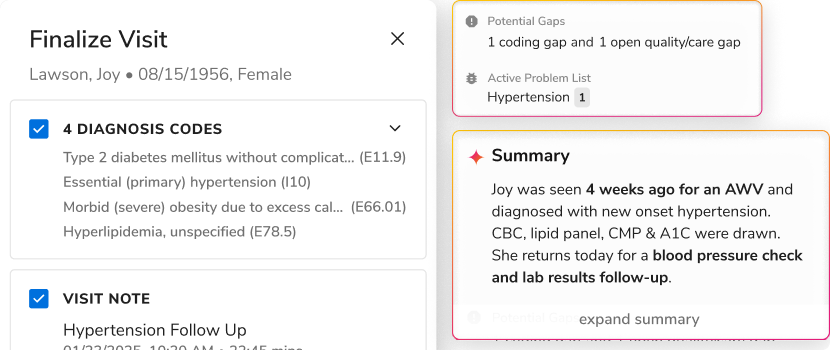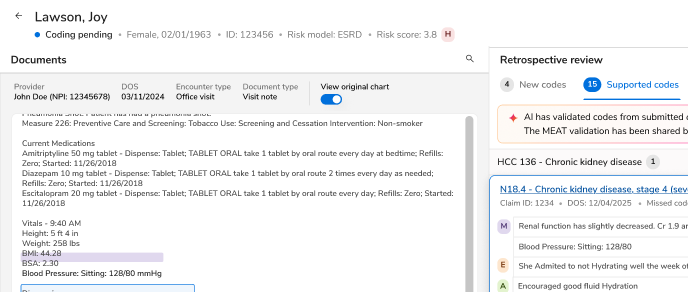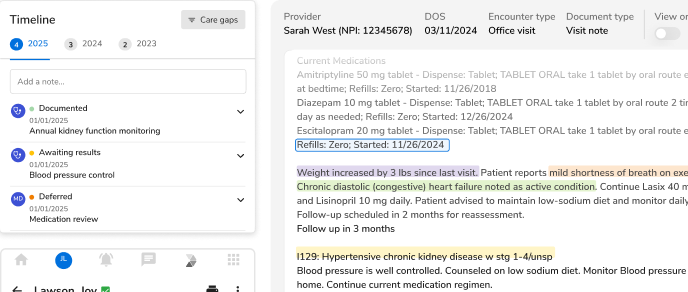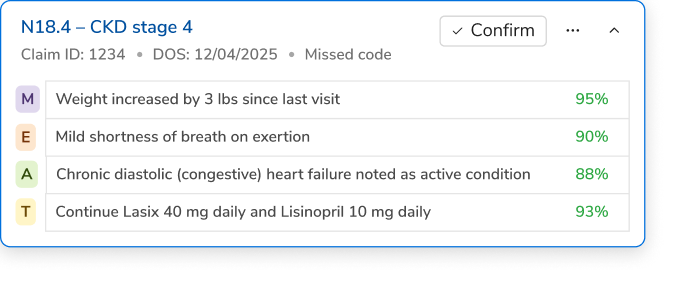The Future of Prior Auth is Zero-Touch and It’s Already Here


Prior authorization (PA) has long been one of healthcare’s most pressing pain points. What started as an attempt to control costs and provide optimal patient care has turned into a significant challenge with delays and disruptions to patient care and outcomes. According to a survey conducted by the American Medical Association, more than 1 in 4 physicians say PA has caused hospitalization, disability, or a life-threatening event for their patients. The administrative toll is equally staggering, with practices spending as much as 13 hours weekly managing these requests.
It is clear that the current model is not going to be sustainable. With CMS’s new rule taking effect in January 2026, healthcare organizations must transition to electronic prior authorization, requiring payers to respond to urgent requests within 72 hours and non-urgent requests within 7 days. This isn’t just another policy update but an opportunity for healthcare organizations to rethink how they manage prior authorizations.
What healthcare needs now isn’t more hands but smarter systems. By leveraging zero-touch and AI-driven automation, organizations can reshape their prior authorization processes completely, from identifying the request to submitting it, tracking its status, and even managing appeals without manual intervention.
The Hidden Costs of Prior Auth
Imagine a patient who has been diagnosed with a chronic disease. Their provider prescribes a medication that could improve their condition and prevent complications. But, because the medication needs prior authorization, the pharmacy can’t dispense it immediately. The clinical staff scrambles to assemble the required documentation, navigate payer rules, and submit the request. Days go by, the patient misses critical doses, and their symptoms worsen.
For the care team, the real issue isn’t the treatment, it’s the paperwork and the back-and-forth they have to do. For the patient, it’s a delay that could have been avoided. This kind of situation doesn’t just happen once in a while. It repeats itself thousands of times daily across healthcare systems.
In addition to the immediate impact on patient outcomes, reliance on an entirely manual prior authorization process leads to additional cost and burnout for providers. For example, 88% of physicians state that PA delays cause increased overall healthcare utilization, including higher emergency room visits and hospitalizations.

The Shift: AI-Powered, Zero-Touch Prior Auth
Today, organizations are rewriting this story entirely. With our Prior Authorization Agent, every layer of friction that exists in the PA process can be tackled. The solution provides an end-to-end authorization workflow that changes how care teams manage approvals.
Here’s how it’s making a difference:
- Proactive identification: As soon as the physician enters a prescription into the EHR, the system detects whether prior authorization is needed. The system checks eligibility, benefit design, and payer-specific rules immediately for the prescription, thereby avoiding delays before they happen.
- Intelligent documentation and packet assembly: Once the agent determines PA is needed, it collects the adequate clinical documentation from across systems, including labs and diagnostics, and completes the prior auth form. It can attach the evidence and can see when something is missing and flag it for the reviewer. Automation drives compliance with regulations and reduces denial rates due to incorrect information.

- Swift review and electronic submission: Staff can review the PA request in an easy-to-navigate chat-based interface, make edits if needed, and submit it electronically to the payer via portals or connected APIs.
- Real-time tracking and appeals: The PA agent monitors authorization in real-time, flags delays, and even triggers automated follow-ups when necessary. It stays connected with payer systems and simplifies interactions with a conversational interface. The caller agent interacts directly with payers, handles escalations, and manages updates, which alleviates staff and clinician burden.
What Zero-Touch Prior Authorization Makes Possible
With AI doing the heavy lifting, zero-touch prior auth allows care teams to:
- Eliminate manual tasks: Automate up to 90% of their administrative tasks, ranging from form filling to status tracking.
- Improve approval rates: Align submissions with payer-specific requirements and achieve around 80-90% first-pass approval.
- Reduce burnout and “pajama time”: Handle a higher volume of prior auth requests with fewer resources efficiently, focus more on delivering patient care, and reclaim personal time, eventually reducing fatigue.
- Deliver cost savings at scale: Eliminate operational costs and recover lost revenue, saving $15 million, possibly on an annual basis.
- Integrate with EHR workflows seamlessly: Manage authorizations directly within their existing systems, without switching between portals or tools.
- Ensure CMS compliance: Meet upcoming federal requirements for electronic prior authorization and stay audit-ready with built-in transparency.

Why Zero-Touch is the Only Way Forward
Healthcare organizations can’t afford to wait. As patient volumes continue to climb and workforce shortages deepen, relying on manual prior auth is no longer an option. A zero-touch AI agent doesn’t just address today’s challenges but provides a failsafe for the future as well. The choice is simple: let current legacy systems erode provider satisfaction or utilize AI automation to improve outcomes for everyone.
Eliminate your prior auth burden. Explore zero-touch prior auth. Contact us now.

.png)





.png)









.svg)
.svg)

.svg)

